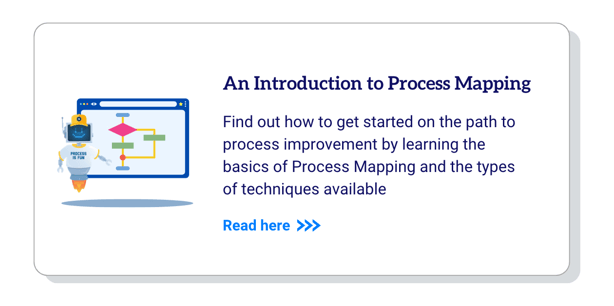What Is Business Process Management?

Business process management (BPM) is a systematic approach to identifying, defining, automating, and improving your business processes. It's one of the best ways to increase business efficiency, effectiveness, and agility.
 What is Business Process Management?
What is Business Process Management?
BPM is an operations management discipline of improving end-to-end Business Process Management by discovering and analyzing them, modeling and measuring how they work, and improving them through optimization and automation.
History of Business Process Management
The history of business process management originated with business and commerce, as different people and groups became specialists in different activities and combined them to create value for others. Formal BPM concepts, such as tasks, departments, functions, production, and outputs, emerged during the early 1900s as businesses began to address job-shop scheduling challenges. Throughout the 1900s, these concepts continued to develop and evolve as companies expanded, restructured, and sought to improve their operations. Business process modeling entered the picture in earnest during the 1990s and became a key input to the industry's automation trends at the turn of the century.
Quality management methodologies, such as Six Sigma, Lean, and Kanban, built upon the foundation of BPM and provided an expanded toolset for companies to measure and improve operational performance. With the expanded use of technology in the business environment since approximately 1998, business process management as a set of concepts and disciplines has been extended to include both manual (human-driven) processes and those integrated with technology. Advanced workflow-orchestration capabilities and artificial intelligence have brought business process management into the limelight during the past few years as companies digitally transform their business processes. Business process automation increases the focus on human interaction management and the user experience as individuals interact with technology-enabled business processes.
Business Process Management Lifecycle
There are many different frameworks that industry organizations, such as the Association of Business Process Management Professionals and the Business Process Institute, have developed that describe the critical elements of business process management and a BPM lifecycle. These elements are:
-
Process Discovery and Identification
-
Process Mapping
-
Business Process Automation
-
Process Execution
-
Process Governance
-
Continual Process Improvement
Process Discovery and Identification
Business process management relates to more than just individual activities – it is the management of end-to-end processes. These processes will include multiple departments, job functions, and IT systems. Identifying business processes is the first step to controlling and optimizing their performance and effectiveness. The identification process includes determining the scope of a process, the activities and actors involved, the linkages and connections used to drive workflow, and the objective/outcome the process is intended to achieve.
Additional Resources:
Process Mapping
Business process mapping is more detailed than identification and relates to both as-is and to-be processes. Design efforts will often include a more detailed review of process flow, business rules, triggering events, decision points, the creation and use of data, and the interfaces/handoffs between process actors. A formalized business process modeling notation (BPMN) enables processes to be designed in a consistent way that can be used for analysis and simulation and to drive automated execution.
Check out this article: Introduction to process mapping article
Business process mapping can help you to:
-
Provide a visualization of the process flow and related components.
-
Perform a “what-if” analysis and simulate how a designed process is intended to operate and perform under various circumstances.
-
Assess the impact of changes on the cost of executing the process.
-
Anticipate the expected performance of a business process.
-
Identify hidden process dependencies and test them before introducing them into the live business environment.
-
Implement changes to process quicker while mitigating the risk of change-related process problems.
Business Process Automation
Most modern business processes involve some level of technology to replace manual tasks or support them. Business process automation is performed for many reasons, including to achieve digital transformation goals, increase service quality, improve operational productivity and scalability, and contain costs. BPA can be as simple as standalone task automation or as complex as automating end-to-end workflows with multiple integrations.
Process Execution
Process execution may involve any combination of manual and/or automated tasks defined as part of the process design and any business rules that guide the progression of work through the process workflow. Process execution is where a company realizes value from the business processes and costs are incurred. Some key considerations to evaluate your process execution are scalability, cost, time to execute, effectiveness in achieving the process's objectives, efficiency/productivity of employees, waste produced, product/output quality, and the consistency of execution.
Process Governance
Process Governance is tracking and measuring the various processes within your organization so you can understand how well they are executing, how effective they are, and where refinement and optimization are needed. Process control is the use of monitored information as the basis for initiating actions that keep your processes operating as designed and intended.
Governance can take different forms, and your approach will depend on the nature of your business processes.
-
Transactional monitoring provides insight into individual transactions (pieces of work) progressing through your business process. This type of monitoring reveals the transaction route through your process workflow and how much time it spent at various states to determine how efficiently the process is operating.
-
Variability tracking (control charts) is a type of monitoring often used in manufacturing processes to evaluate how consistently a process is operating and how that affects the consistency of process outputs.
-
Process mining (also called log analysis) is often used as a view of the performance of automated processes (and activities) during time to identify anomalies that need attention.
-
Predictive business process monitoring, involving modern technologies, such as machine learning and forecasting analytics, enables companies to correlate past performance and the environmental factors that influenced the process to anticipate how the process is likely to perform in the future.
The degree of monitoring detail, frequency, and level of monitoring automation you will need depends on the level of process control you seek to achieve. Processes that must be highly efficient (for cost reasons) and operate in real-time (such as online financial transactions) or those that must produce high levels of quality and consistency (such as medical processes) will likely require more intense and detailed monitoring.
Everything you need to know about The Process Framework – A Guide for All Processes
Continual Process Improvement
This element of Business Process Management entails optimizing and re-engineering your processes. As your processes execute, monitoring data will identify opportunities for improvement and process tuning to improve the process performance factors (cost, speed, quality, consistency, and effectiveness). Continual Process Improvement is the means to understand why your processes are operating as they are and to identify what actions must be taken or changes made to achieve more desirable results. This often includes returning to the design and modeling stage of business process management to evaluate alternatives. Once a change has been implemented, the results of the change can be measured through continuous process-monitoring activities.
When continuous improvement is insufficient and/or forces in the business environment have resulted in a change to your processes' objectives, business process re-engineering may be necessary. This may include a major re-design of an existing process, merging multiple processes, and/or discontinuing and replacing some processes with others.
Reengineering your processes will require sound organizational change management practices.
Why is Business Process Management Important?
Since approximately 2008, the business environment in which companies operate has become much more fluid (changing rapidly) and competitive. Causes for this include technology advances, greater access to information, employee job-hopping between companies, and greater demands of quality and efficiency from customers.
For companies to develop a sustainable competitive advantage and maximum profitability, their internal operational processes and customer-facing interactions must be both effective and highly efficient. Business process management is the set of tools companies use to achieve the levels of optimization and performance they require.
In addition to driving performance, modern business process management focuses on governance (decision-making), risk and compliance, and organizational agility. Companies must evolve quickly and safely to take advantage of near-term opportunities and address threats while maintaining strategic focus. The BPM Institute explained this in the context of three outcomes crucial to a performance-based, customer-driven firm:
-
Provide clarity on strategic direction
-
Align the firm’s resources
-
Increase discipline in daily operations
Business process management enables these outcomes by ensuring a company has well-defined business processes that are well-understood and consistently executed. When forces from the external environment necessitate the company to make changes, a solid business process foundation enables effective and coordinated change to occur, increasing organizational agility.
Top Benefits of Business Process Management
-
Improved business agility – Business process management gives companies greater control and agility by allowing them to alter workflows and reuse or customize them to adapt to changing business needs.
-
Reduced costs and higher revenues – Financial performance is improved through more efficient use of resources, reduced waste, and faster time to market for new products and services.
-
Higher efficiency and productivity – Managing end-to-end business processes enables the reduction of bottlenecks (queueing) and increases capacity utilization.
-
Better visibility – Monitoring business processes provides enhanced transparency to process performance and the ability to recognize and respond to issues quickly.
-
Compliance, safety, and security – Structured processes and the ability to demonstrate process adherence are essential to compliance and ensuring the safety and security of your employees and customers.
-
Customer focus – Business process design and modeling techniques are increasingly used to demonstrate the company’s capability to serve customers’ needs, including using simulations and proofs-of-concept.
-
Process consistency – BPM helps with process standardization by creating a single way of executing tasks, activities, etc., within your organization. Consistent execution is the key to consistent results.
- What are the Benefits of Business Process Management
- Business Process Management Drives Process Innovation
Business Process Management in Modern Companies
The Association of Business Process Management Professionals describes the purpose of business process management as” BPM involves the deliberate, collaborative and increasingly technology-aided definition, improvement and innovation of end-to-end business processes that drive business results, create value and enable an organization to achieve its business objectives with more agility.” Modern companies must control their business processes to operate at the desired levels of efficiency and success in the marketplace. Structured business processes also provide the foundation for automation and the effective use of technology within the organization.
Business process management in modern organizations is not just a set of manual analysis activities. It is a data-driven exercise, which technology supports in the form of a BPM Suite (BPMS) – a set of tools designed specifically to help BPM professionals accomplish their goals. BPM suites have a core set of analysis tools and are often integrated with enterprise architecture, application development, process automation, and solution development tools to help a company monitor and manage the many facets of its operations and drive improvements. BPM tools are used to help companies with:
-
Visualization and modeling
-
Measurement and analysis
-
Operational optimization
-
Monitoring and control
Achieving a company's agility goals requires evaluating the performance of processes efficiently, understanding why events and situations are occurring the way they are, and making real-time decisions about how to optimize them. For companies that have completed a digital transformation and are heavily dependent on technology, this requires managing both the human-driven activities and simultaneously the systems that support them – business process management helps you do that.
Originally published Oct 5, 2018 11:10 AM, updated May 27, 2022

